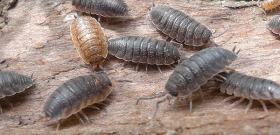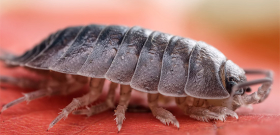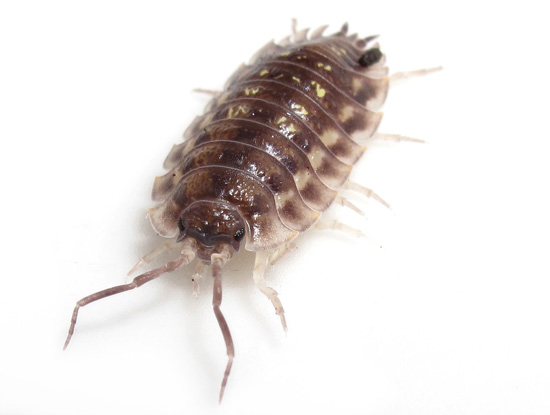
Generally speaking, there are more than 3,500 species of wood lice in the world, of which only a few dozen are found in our country. In apartments (for example, in bathrooms, toilets) you can find only two types:
- common woodlouse-armadillo;
- as well as wood lice rough.
The fact is that an apartment or a private house is still not the most suitable habitat for these creatures, and therefore only the most common and unpretentious species penetrate here and more or less take root here. In general, in Russian cities - outside residential or utility premises - you can find a much larger number of species of these interesting crustaceans.

On a note
Most ordinary people believe that wood lice are insects. In fact, they are not insects at all, but belong to the suborder of crustaceans. All insects have only 3 pairs of legs, and woodlice have many more of them, and besides, there are also gills.
Scientists studying invertebrates often conduct research and analysis of the fauna of woodlice in certain settlements. Based on the results of such studies, we can safely conclude that in the conditions of the cities of central Russia, a unique “set” of wood lice species has already formed. Each of these species has its own distinctive features that are interesting and distinguish them from other arthropods.
However, we, urban residents, are primarily interested in precisely those types of wood lice that are found in our apartments and houses. So let's get to know them better...
Common woodlouse (Armadillidium vulgare), or armadillo woodlouse
Common woodlouse (Armadillidium vulgare) is, one might say, the very well-known and very common species of woodlice throughout Russia. It is the armadillo that has a high shell and a characteristic dark body color.
The photographs below show adults of the common woodlice:

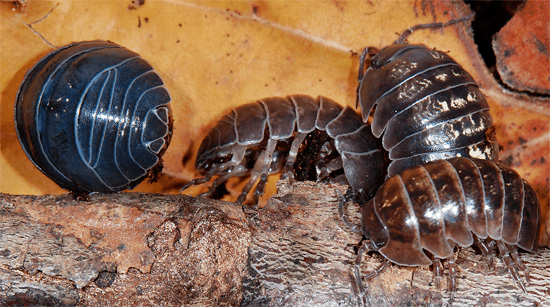
Directly in apartments, this species is quite rare, but in basements, damp cellars and heating mains it is quite typical. In cities and towns, common wood lice are most often found in gardens, front gardens, parks, wastelands and roadsides. They keep mainly under stones and various objects lying directly on the ground.
These small crustaceans feed on plants, both living and already decaying. In gardens and front gardens, this type of woodlice can harm plantings by damaging flowers, but, fortunately, most often they choose weeds, thereby turning out to be useful human neighbors.
It is quite easy to distinguish a miniature "armadillo" from other relatives found in cities: its movements are unhurried, and at the slightest disturbance it curls up into a ball. An example is shown in the photo below:
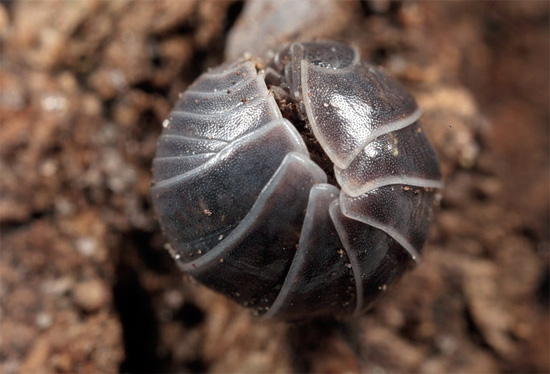
It is interesting
It was the common armadillo, after an accidental transport from Europe to the United States, that spread there in huge quantities, and today on the coast of California in some places it is sometimes found in quantities of more than 10,000 individuals per square meter.
Rough woodlouse (Porcellio scaber)
Despite the widespread distribution of common woodlice in Russia, the most numerous and most common species found in residential areas is the so-called rough woodlouse (Porcellio scaber, it is sometimes also called "cellar woodlice"). Representatives of this species are very mobile, they run much faster than the armadillos, and easily move between the floors of apartment buildings (and sometimes there are ways to literally enter apartments from damp attics in houses where the roof is leaking).
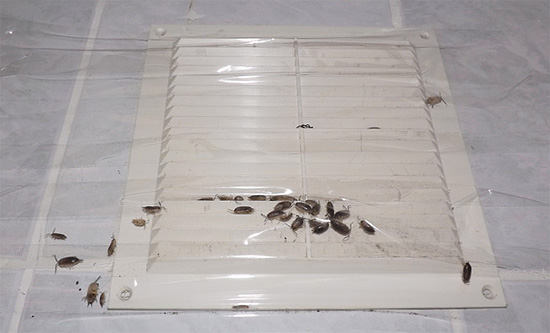
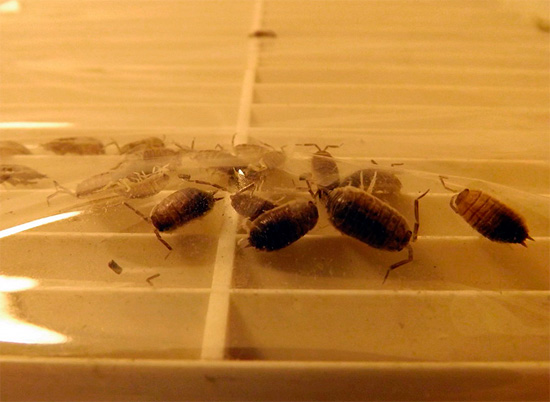
When caught, the rough woodlouse does not curl up into a ball, but, on the contrary, arches and quickly moves all its ten legs, trying to break free and run away.
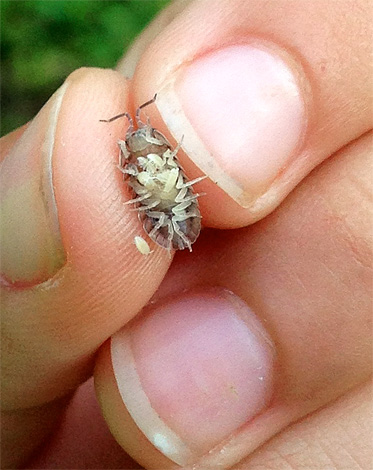
Its carapace is soft and rather flat, and its color varies greatly depending on the habitat. So, for example, rough woodlice living in the southern regions are light gray with a pinkish tinge, in more northern cities they are yellowish or reddish in color, and when moving east they become dark, sometimes almost black.
The photo shows a typical representative of the rough woodlice:
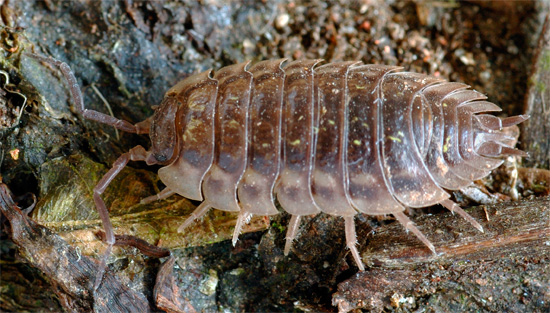
When penetrating into houses and various buildings of a person, this species often turns into a pest. These small crustaceans can be dangerous to greenhouses, farms, greenhouses, orchards and orchards. In basements and cellars, they often feed on vegetables and fruits stored here, and in warehouses they can damage agricultural products.

However, if you met such wood lice in the bathroom or toilet of your apartment, then you should not be particularly afraid - they do not bite, do not spoil interior items, and in general, are generally quite harmless.However, their appearance may indicate that somewhere nearby there is a damp room (attic, basement), from where they, in fact, crawl.
Trachelipus rathkei
This type of wood lice does not even have a generally recognized Russian-language name, but at the same time it is also quite common in many cities of central Russia.
According to scientific research, the abundance of representatives of this species is due to the fact that they are distinguished by their excellent ability to adapt to environmental conditions. In addition, as it turned out, representatives of Trachelipus rathkei choose to live in those areas of cities where the buildings are the most dense.
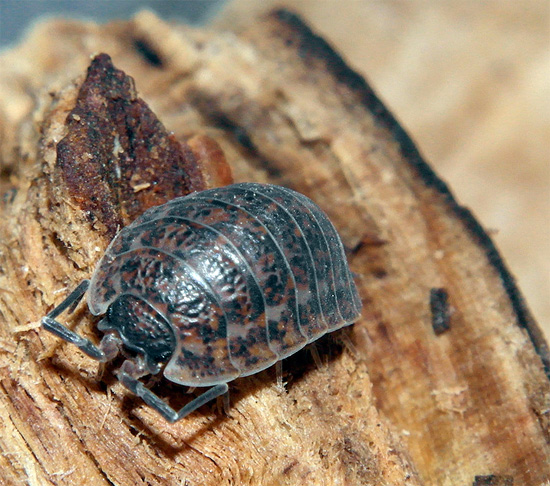
These crustaceans are distinguished by their characteristic shell, which is slightly flattened and greatly expanded from below, which makes it difficult to catch them with fingers. In addition, the antennae of Trachelipus rathkei are quite long - so much so that they make it possible to distinguish even young individuals from related species by them.
Trachelipus rathkei are distributed throughout the world, and in the same large numbers as in Russia, they are found in Europe, the USA, and Canada.
Scientists are very attracted to the strong variability in the sex ratio in different populations of these woodlice. In some cities, males predominate in the population, in others - females, but experts still cannot figure out the reasons for such fluctuations.
In the photo below you can see what an adult copy of Trachelipus rathkei looks like:
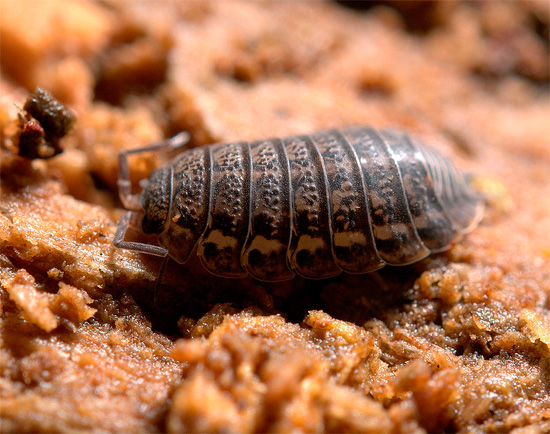
Porcellio spinicornis
Porcellio spinicornis is another well-known species of woodlice, widely distributed in Europe and accidentally introduced into North America a few years ago.
Porcellio spinicornis is characterized by the presence of two rows of yellow dots on the shell scutes, more or less distinctly expressed in different populations and in individual individuals. Another distinctive feature of this species is the antennae of three segments, long and quite strongly curved at different angles on each segment.
The photograph clearly shows the yellow spots on the shell of Porcellio spinicornis:
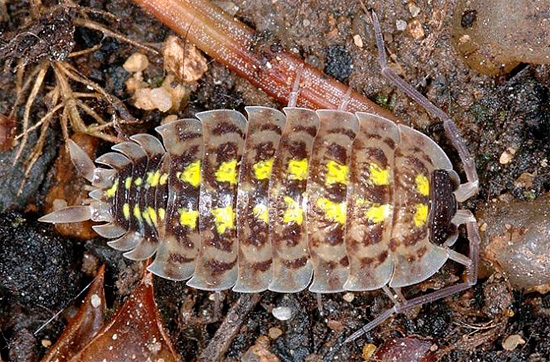
It is interesting
Porcellio spinicornis gravitates very strongly to places with limestone or lime. Most often, this species is found near chalk quarries, in houses made of foam concrete, or in old churches with whitewashed walls.
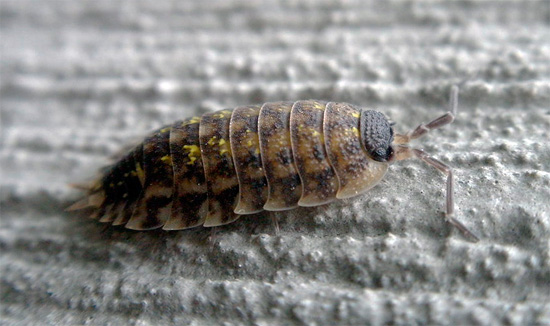
Cylisticus convexus
The woodlouse Cylisticus convexus is known for having spread throughout the world in a relatively short time, but it cannot be called a typical inhabitant of urban buildings: Cylisticus convexus is almost never found in apartments. Individuals of this species prefer to settle on agricultural lands and in various buildings such as cowsheds, silos and currents.
This type of woodlice is well defined by noticeable and rather long cerci - protrusions at the end of the abdomen, similar to antennae:

"Home" species of woodlice in other countries
In Europe and the Mediterranean countries, the list of typical "domestic" woodlice looks a little different than for Russia:
- The first place in terms of prevalence is occupied by the common woodlice (armadillo), which is also characteristic of Russian residential premises, as well as various outbuildings.
- But the second place is occupied by the famous desert woodlouse of Réaumur, which is considered, so to speak, the most terrestrial crustacean in the world, adapted to living in semi-deserts and deserts.This species is especially common in Lebanon, Israel, Egypt and Turkey - here it is found even in larger quantities than in the south of Russia there is a rough woodlouse.


In tropical countries, a significantly larger number of species of wood lice settle in apartments, but they differ little from their relatives characteristic of central Russia. Even their sizes are not impressive - the largest representatives reach a length of about 3-4 cm, and only individual giants grow up to 5-6 cm.
Other arthropods mistaken for woodlice in the home
The appearance of wood lice is so specific that in our country it is very difficult to confuse them with any other guest in the apartment. And yet, many owners of apartments and houses still “succeed”.
So, for example, wood lice are sometimes called silverfish. True, this applies only to those people who very rarely saw wood lice in their lives, because these creatures are completely different from each other. It is enough to look at the photos of woodlice and silverfish once to understand who is who:

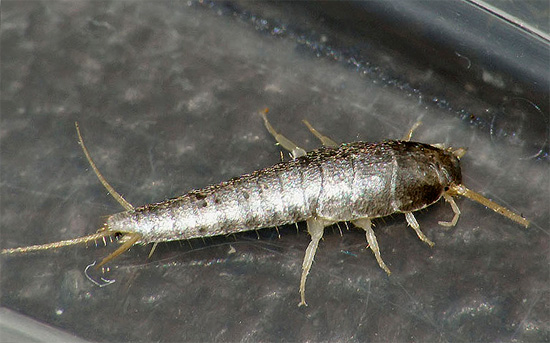
It is interesting
In the south of our country, in cellars and basements, people often meet kivsyak (the most common of them is Crimean kivsyak), which are also sometimes called wood lice. As in the situation with silverfish, nods and woodlice differ so well that when you see these two creatures side by side, it will be difficult to confuse them.
But in the tropics there are centipedes with hard shells, very similar to wood lice, but, nevertheless, having nothing in common with them:
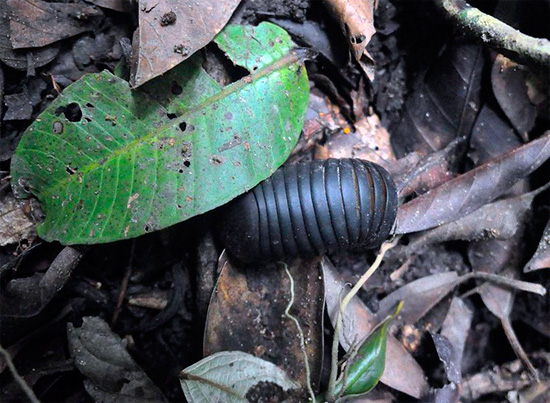
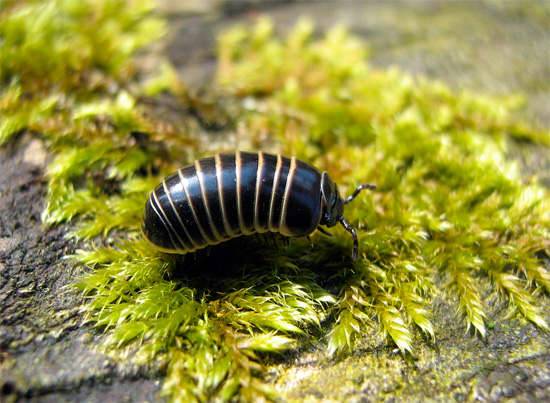
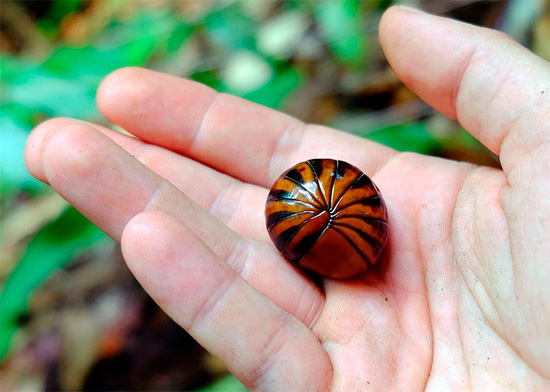
To distinguish these centipedes from the glomeris family from wood lice, you really need to know some of the features of the anatomy of each species.
For example, the common armadillo may be confused with the centipede Glomeris marginata - these creatures are very similar in appearance. However, the centipede, unlike wood lice, is almost never found in residential buildings and human buildings, preferring wet forest litter and spaces under stones.
Let's sum up a little.
On the territory of Russia, in an apartment or any outbuilding, you can mainly find only two types of wood lice, which are easily recognizable:
- common wood lice;
- wood lice are rough.
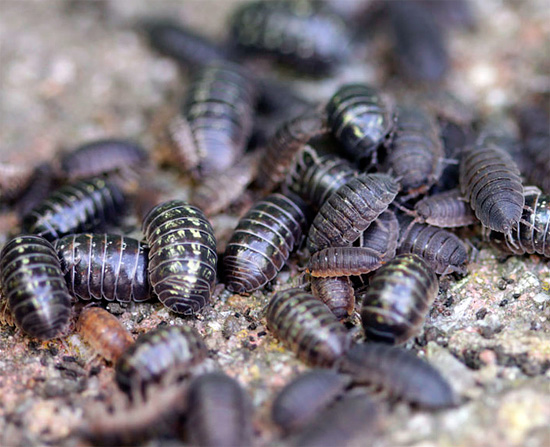
If these "guests" appeared in your apartment, then you need to immediately figure out where they get into the room from, and also take measures to eliminate excessive humidity in their "abode" before this dampness leads to other serious problems (mold, rotting, pests and parasites).
Interesting video: the invasion of wood lice in the apartments of a multi-storey building

